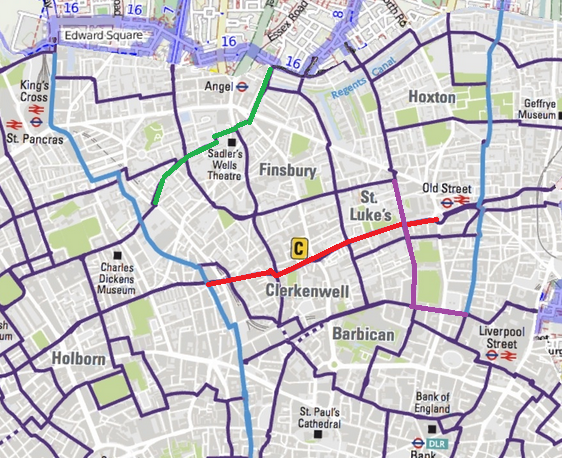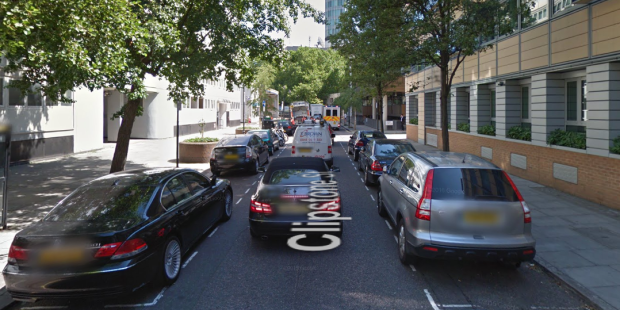In July 2015, we reported how IslingtonCouncil spent more than half a million pounds of our money received via Transport for London in internal and external “design fees” without actually implementing any section of the Central London Grid, in spite of having accepted £2,000,000 for that purpose.
In June 2014 TfL awarded funding to the Council to design, consult on and deliver routes 1 (Clerkenwell Road from the junction with Farringdon Road to Old Street roundabout), and 3 (Lloyd Baker Street from the junction with Farringdon Road to Arlington Avenue at the junction with New North Road), and part of route 2 (Bath Street from the junction with City Road to Finsbury Square at the junction with Wilson Street).
Routes: 1: red; 2: purple; 3: green
Let’s see how the Council is doing, 19 months after receiving the money:
Route 1 – The most cycled route in Central London – Nothing
Route 3 – An existing QuietWay – Virtually Nothing, Job considered Done
Route 2 – Consultation – Whoa!
To put the above into context, in the mean time
- TfL has consulted and either completed or partially completed large stretches of fully segregated Cycle Super Highways (Embankment; Blackfriars Road and Bridge; Vauxhall Bridge and Gyratory ,to Oval);
- Camden Council has implemented the doubling of Torrington Place segregated cycle tracks and built segregated tracks on Pancras Road; (shamefully they are doing nothing at Holborn, which should be their top priority, given four recent fatalities);
- Westminster has consulted on three difficult stretches of the Grid (mostly sub-standard designs);
- The City of London (the richest Local Authority in the world) is more shameful than Islington; in spite of four recent cycle fatalities in its territory it has refused to provide any part of the Grid (except a sub-standard N-S route), because of a personal spat between one of its Officers, Iain Simmons and Andrew Gilligan.
Let’s look at Islington’s consultation. Here are the proposals:
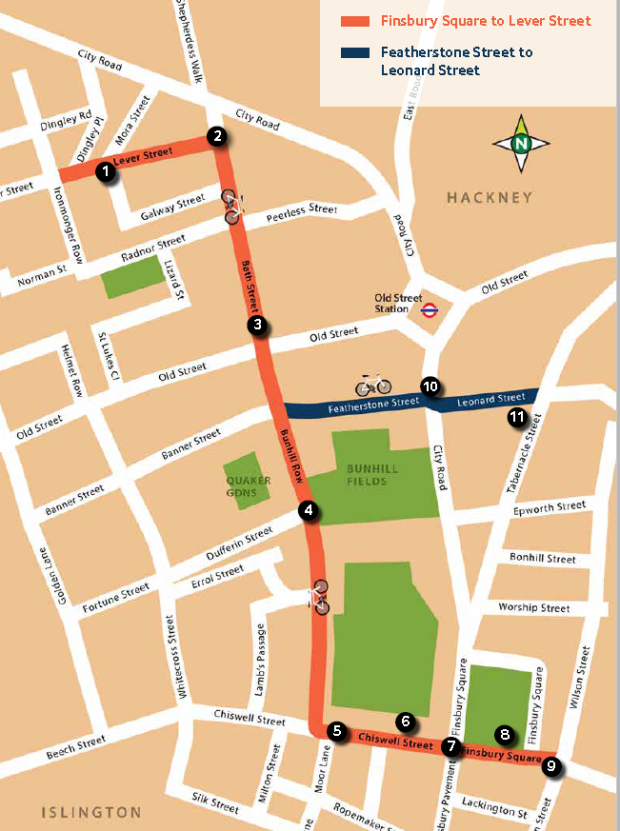
1 – Lever Street – Two-way cycling, providing a westbound cycle lane
Strangely, there is already an outside with-flow cycle lane on this stretch of Lever Street.
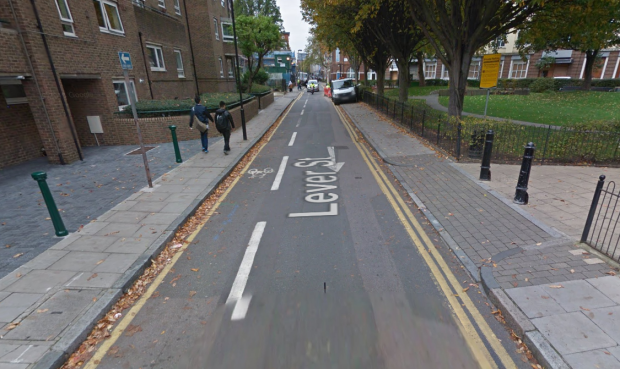
So what they will do is switch the direction of the cycle signs and make most of the line continuous. PAINT JOB. The plans say that there will be no waiting/stopping Mon-Fri 07-19 but how do they plan to enforce it, to prevent this?
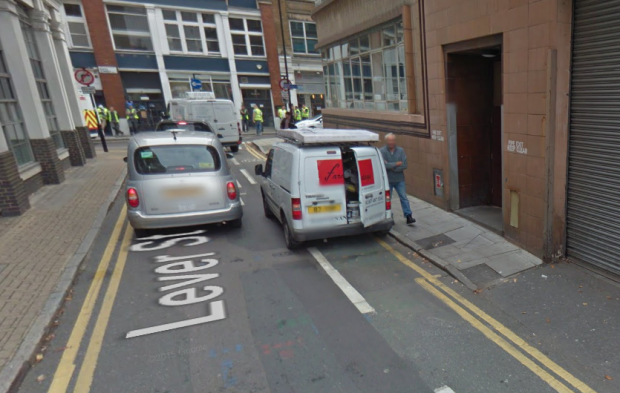
2 -Junction Bath Street/Lever Street – Kerbside build-out to protect cyclists turning into contraflow cycle lane.
There is already a build-out here. The proposal is to increase its size so that one car park space is replaced by cycle racks.
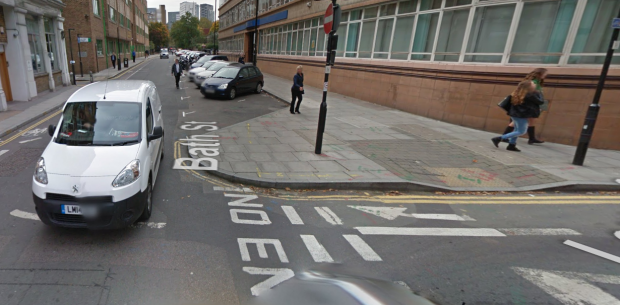
No explanation on
- how would it make safer for people turning
- why not just install racks where the car parking space is
==> Waste of resources; no improvement in safety
3 Bath Street through to Bunhill Row – Refreshing existing road
markings to better define the cycle route
PAINT JOB
4 Bunhill Row – Clearly marked contra-flow cycle lane which will help
cycle safety by making it clearer that cyclists are using this route
PAINT JOB – Please note there is inconsistency between the drawings and it is not clear whether the contraflow lane will be clearly marked all the way to Chiswell Street. It is clear however that contraflow riders will be forced to ride in the door zone for about 200m. It is not clear why car parking is needed here on both sides of the street:
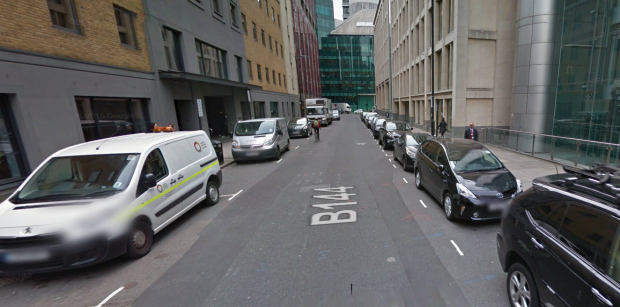
5 Bunhill Row junction Chiswell Street – Protection for cyclists with
footway build-outs and traffic islands. A signalised junction could be
considered in future, depending on the outcome of a consultation
carried out by the City of London in November 2015.
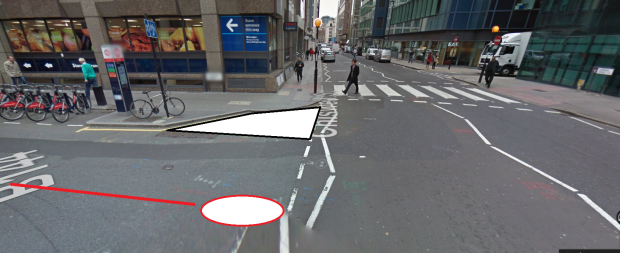
Another unnecessary build-out proposed; the white area is useful for contraflow cyclists coming from the left intending to turn left. The build-out may be helpful for pedestrians, but if that were the intention, a zebra across the entrance of Bunhill Row would be much more useful. So paradoxically here is a case of paint job needed but not given.
The next four points refer to quite substantial work that is going to cost a lot of money for very little immediate gain.
6 Chiswell Street – Introduction of segregated cycling facilities resulting in the loss of some parking bays
7 Chiswell Street/Finsbury Square junction – separate traffic light phases for cyclists
8 Finsbury Square – Two-way segregated cycle lanes
9 Sun Street/Wilson Street junction – Two-way segregated cycle lane
Let’s see why. It all starts from not being able to think of a network:
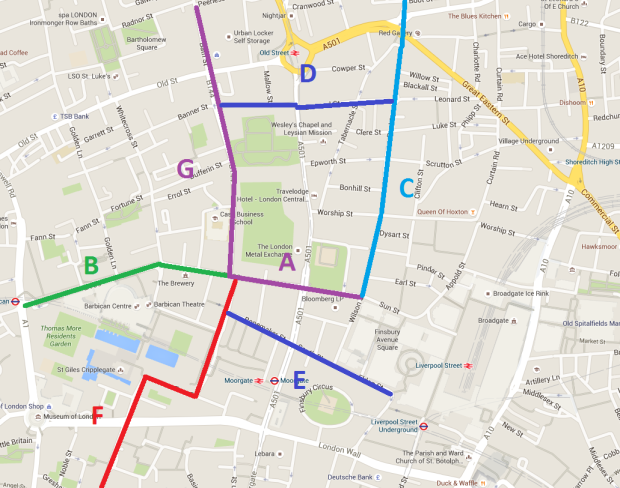
Officers’ present mindset is “build a route”. Users, on the other hand, think: “How do I get from A to B safely and pleasantly?” A route by itself is valueless unless it links with others. These are the key network considerations in this area:
- TfL is building C and the City has promised F for 2016.
- Unfortunately B is not planned this year; A makes sense only in conjunction with B.
- For anyone coming from the North, D+C is just as efficient as G+A, and much cheaper to implement.
- The real purpose of G is to link with F, so the crucial intervention is the Bunhill Row / Chiswell Street junction, which is not considered in this consultation (it is referred as “could be considered in future”)
- Even if one is at G, E makes more sense to reach Liverpool Street than A
So yes, A is good to have, but it makes very little sense to spend the money there, when it could be spent more wisely elsewhere (for example the Bath Street/Shepherdess Walk Junction, which would link this route to the canal and beyond. That is a TfL responsibility, but what is Islington doing to hasten the process?)
The difficulty of the Bunhill Row – Moor Lane Link should not be a reason to duck it, because that is the main weak link to solve. We are against signalised junction unless necessary. Our proposal for the link is a wide N-S priority (and no-stopping) zone for pedestrians and cyclists that encompasses the entrances of Bunhill Row and Moor Lane.
Let’s look at what is proposed at D
Featherstone Street to Leonard Street -Proposed Measures
10 Featherstone Street/City Road junction – Featherstone Street at the Junction of City Road will be closed to motor traffic
11 Leonard Street – Inset parking bays and widened cycle lane to improve contraflow cycling
Please note that Featherstone Street is already closed to motor traffic because of multi-year building works, so they are proposing to maintain the status quo. This is what is proposed for crossing City Road:
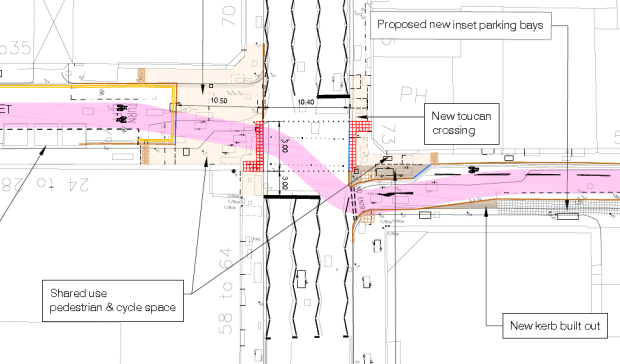
Essentially the Council is proposing to do NOTHING to a very unpleasant and unsafe crossing. First, the mixing of people on foot and on bikes especially on the extremely narrow East pavement is totally unsatisfactory. The solution is not difficult: keep the cycle flow South of the pedestrian flow: all you need to do is move the motor stop lines further away from the junction and remove the jut-out on the NE corner.
Equally important is to alter the phasing of the light from the present inconsiderate 40-sec wait for active travellers.
Leonard Street is presently not fit for purpose:
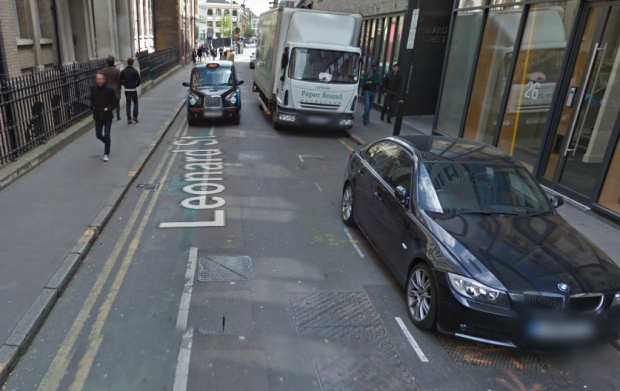
The drawings are not clear if the proposed solution will be satisfactory:
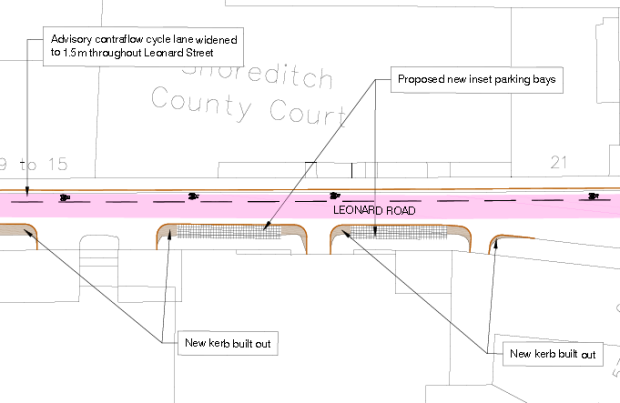
Are the new parking bays taking away space from the pavement?
If yes; why not make the contraflow lane mandatory; if no, what is the point?
We recently had this exchange with Claudia Webbe:
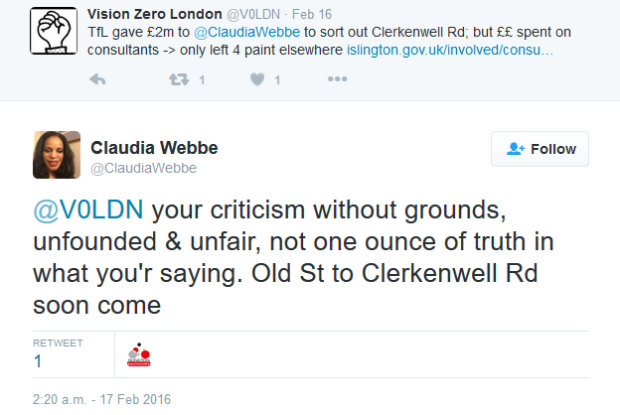
We admit that to say that the proposed scheme is just paint, glosses over certain parts of it, but we hope it is now clear why we think that what is not-paint is either useless or unnecessary at the moment. Worse, the key decisions to improve the weak links of this route to the rest of the network are ignored or ducked.
We are pleased to hear that the plans for the Clerkenwell Boulevard will be released soon; we need to point out however that we have heard this rumour many times before, and the Council has been sitting on them for well over a year now.
